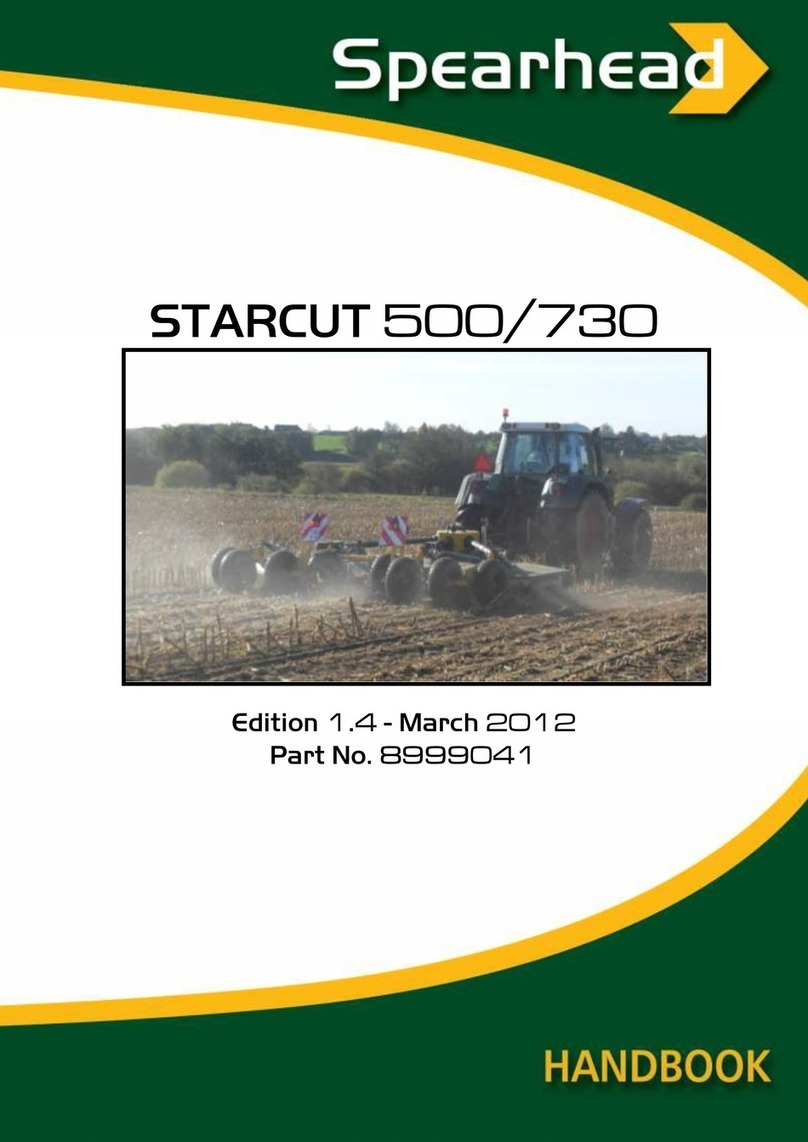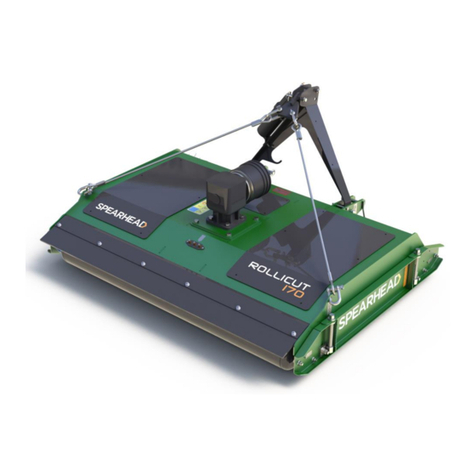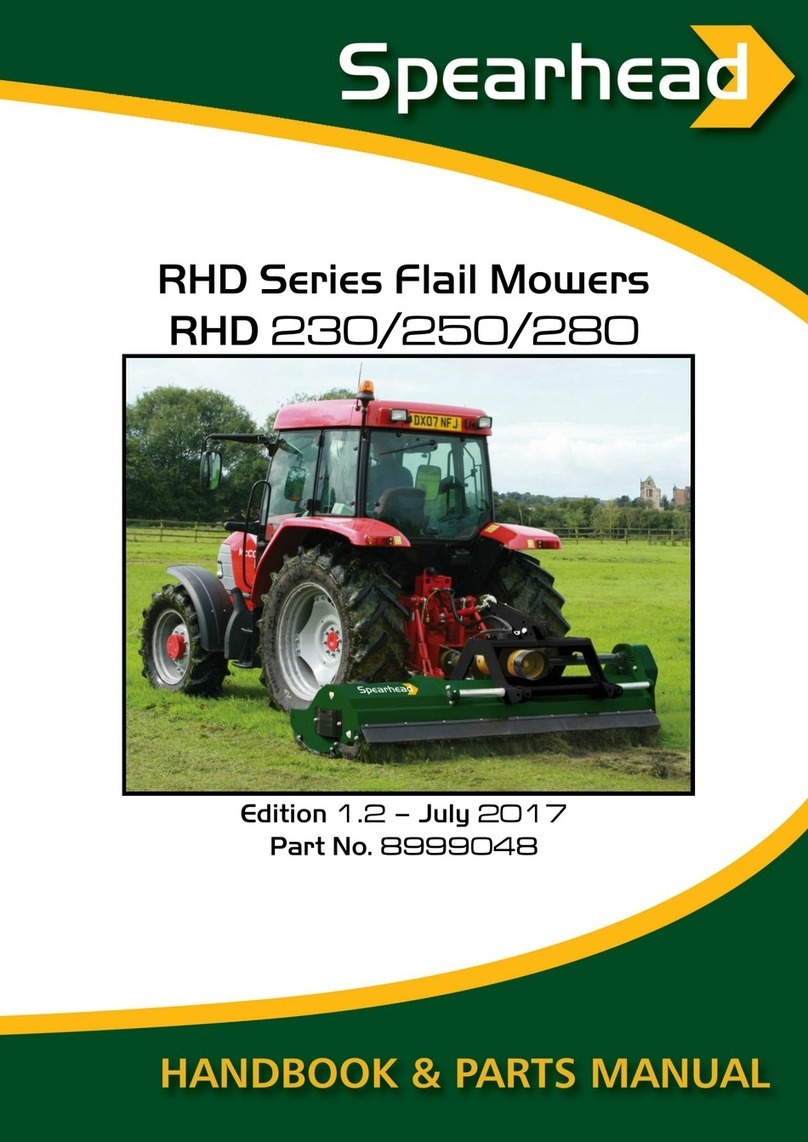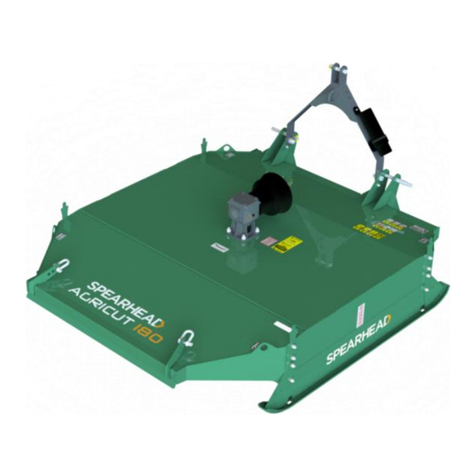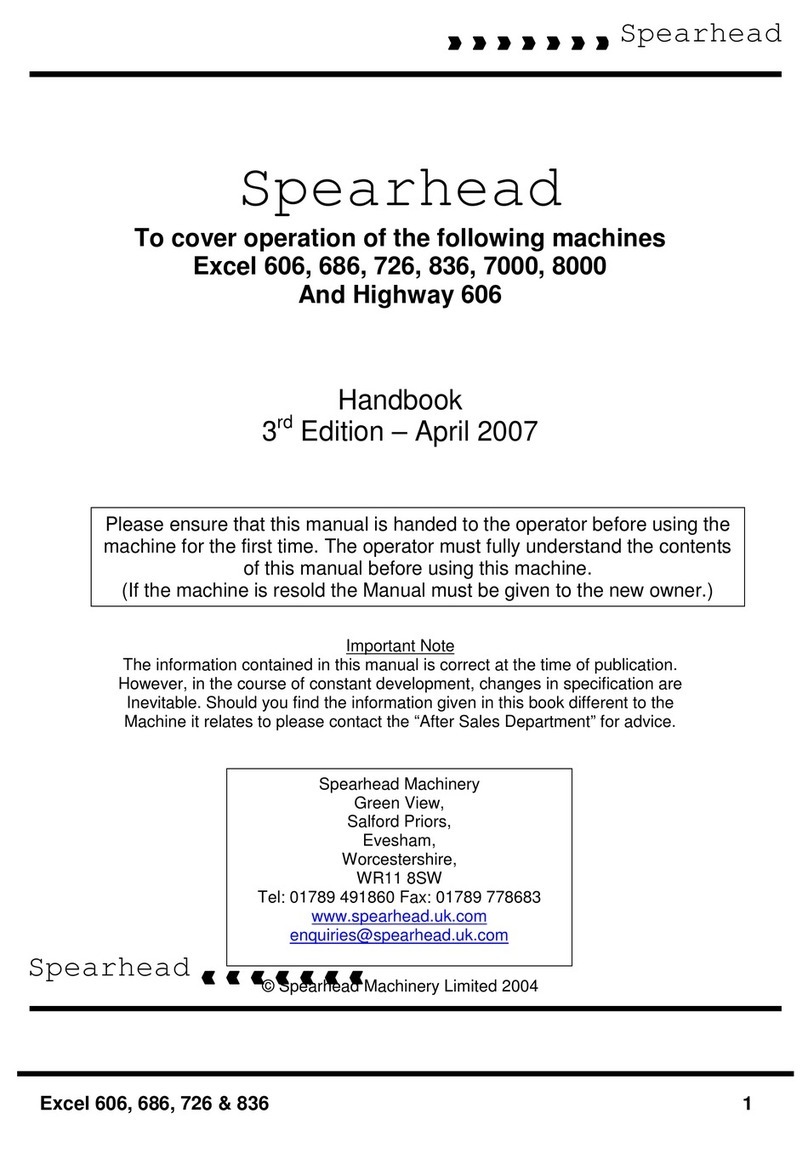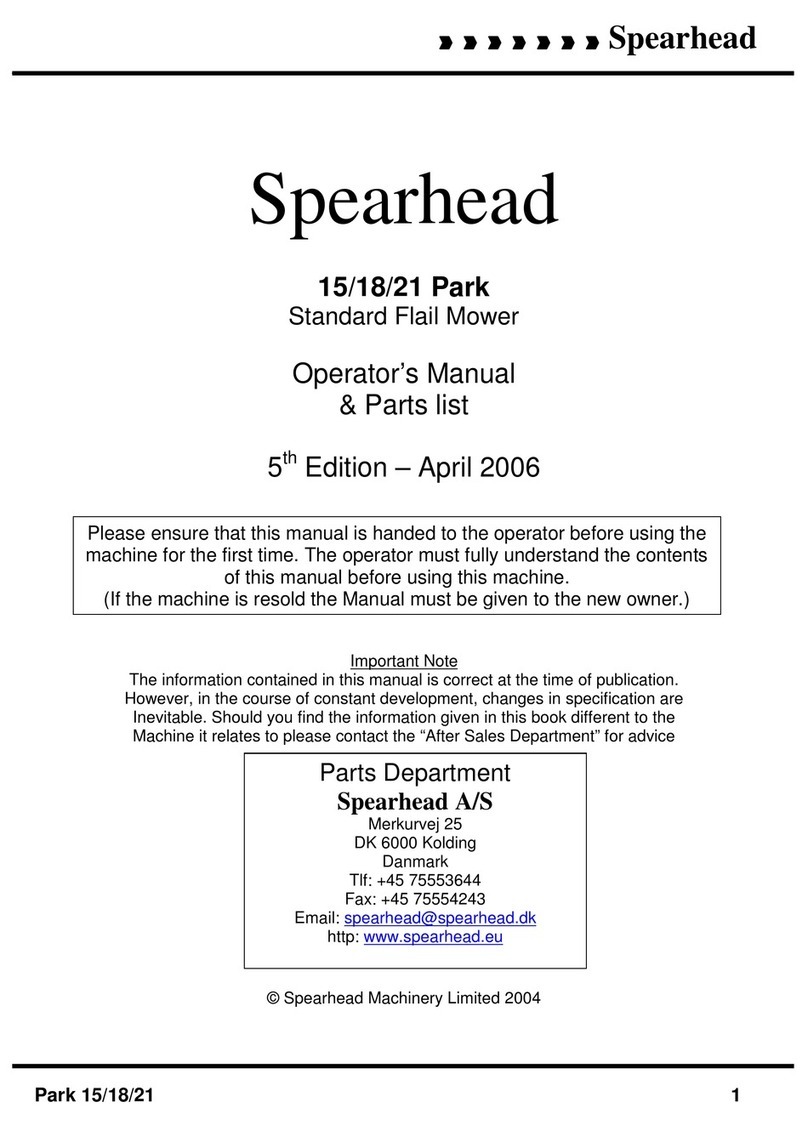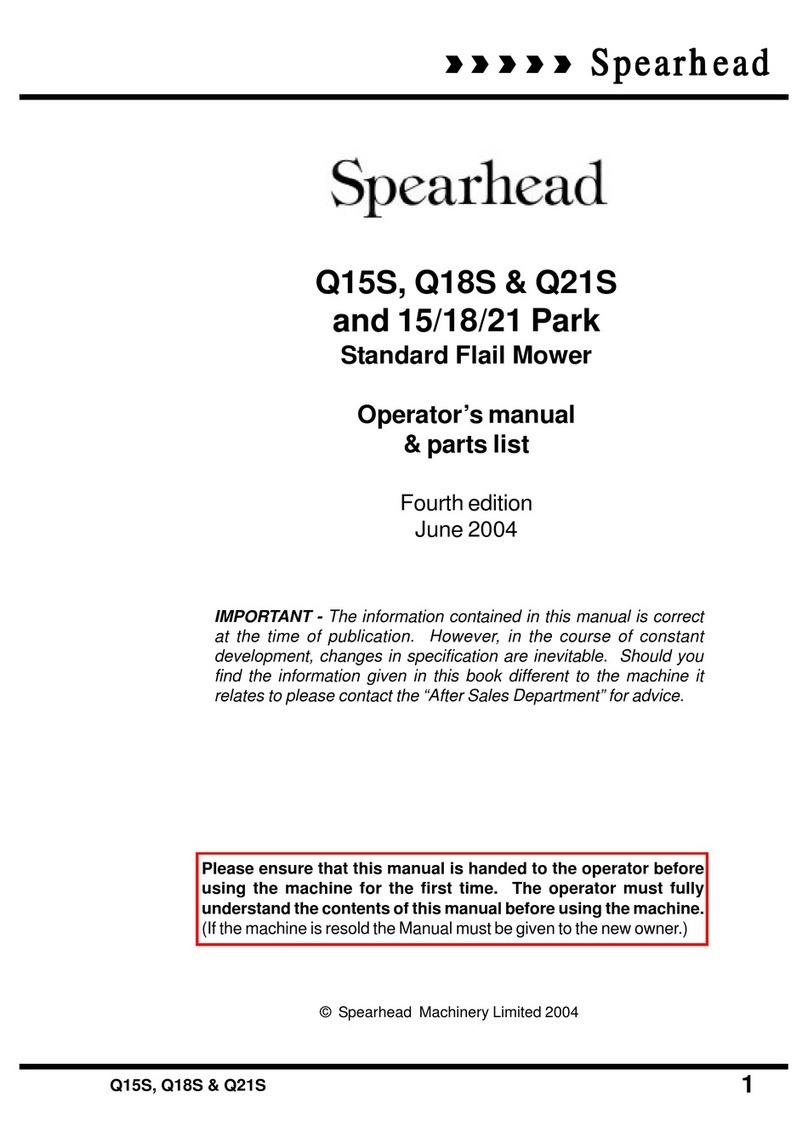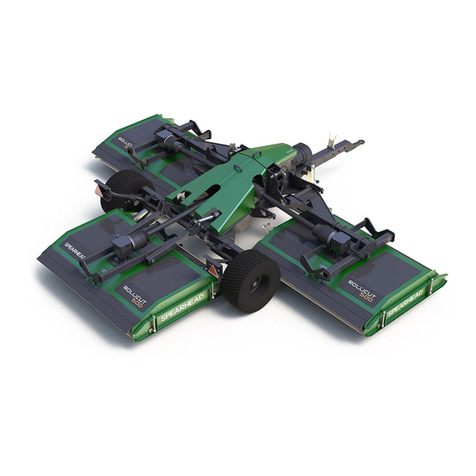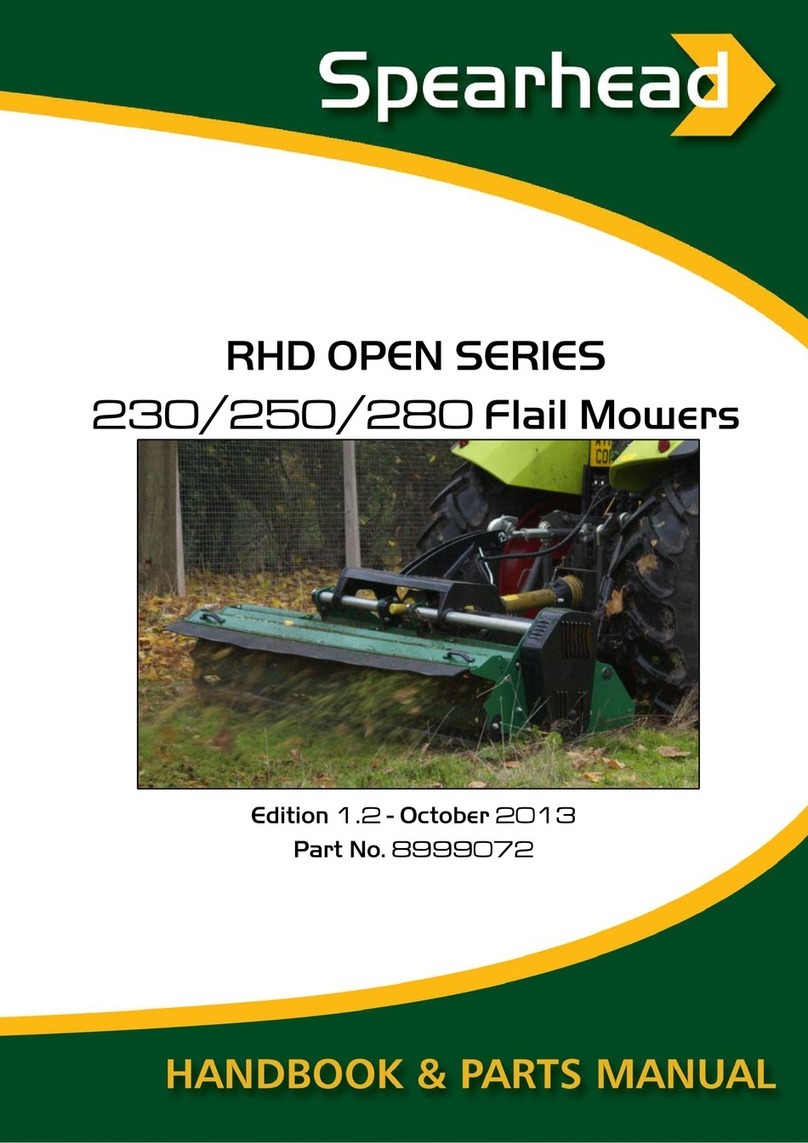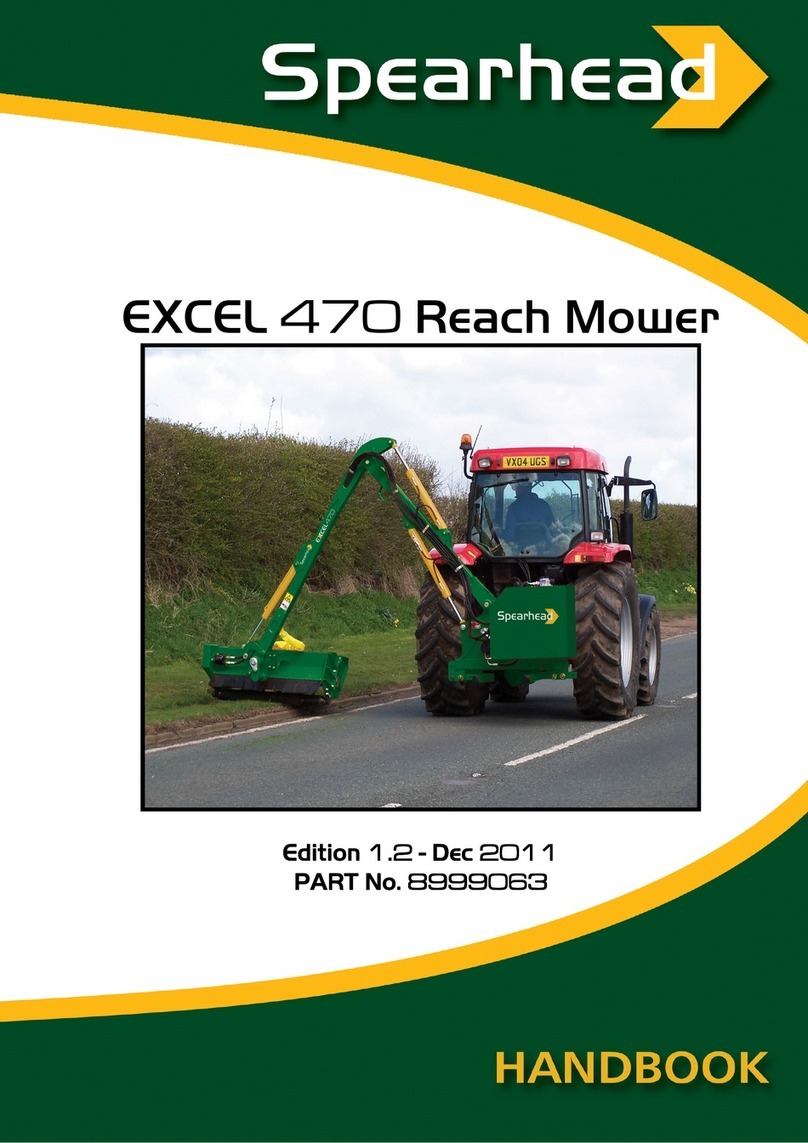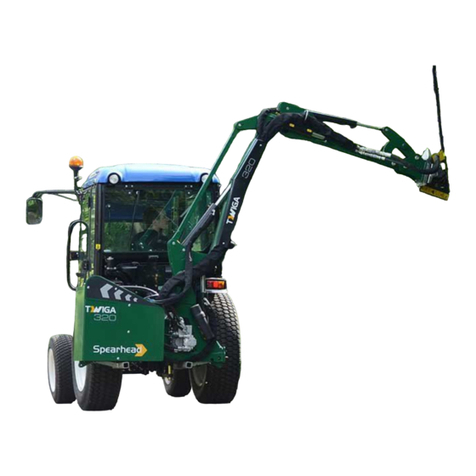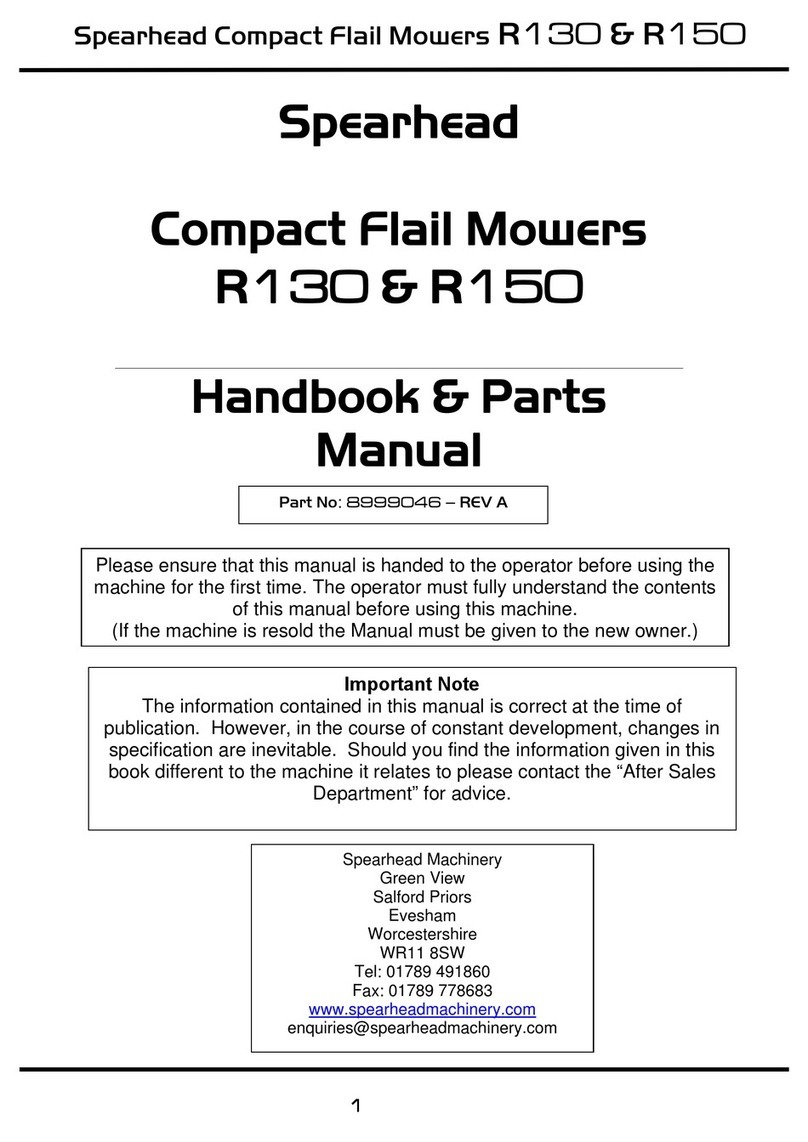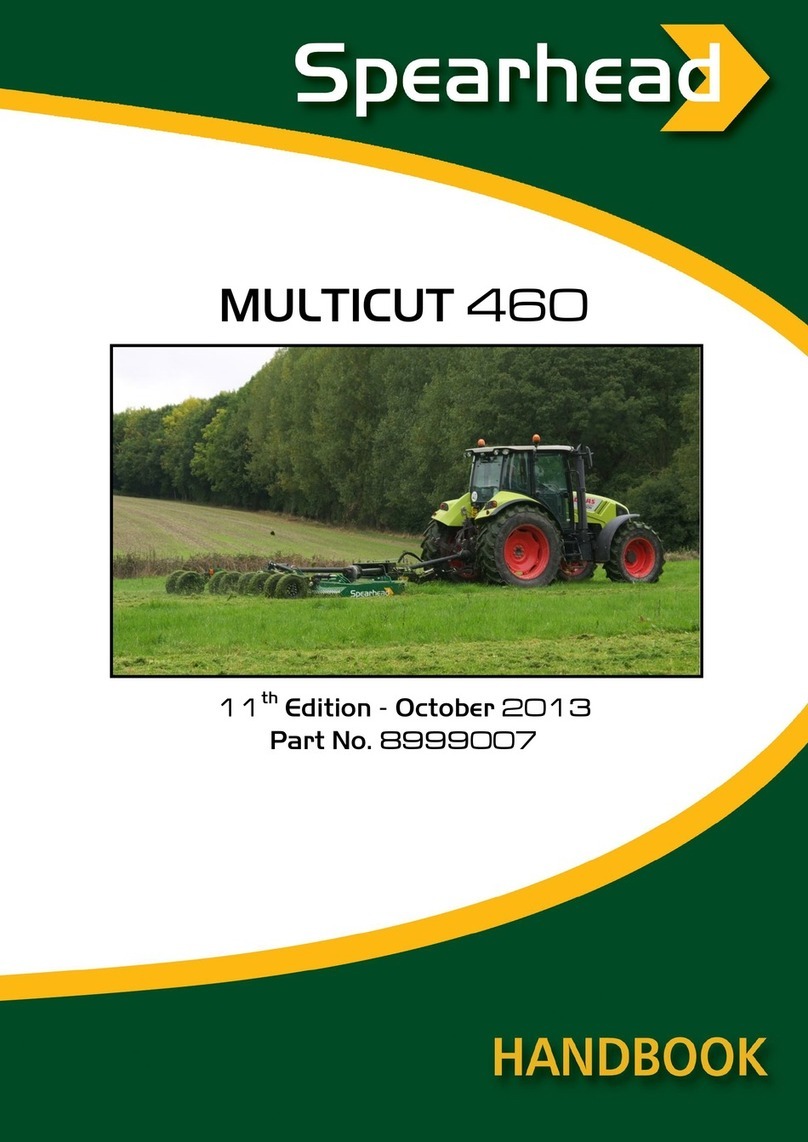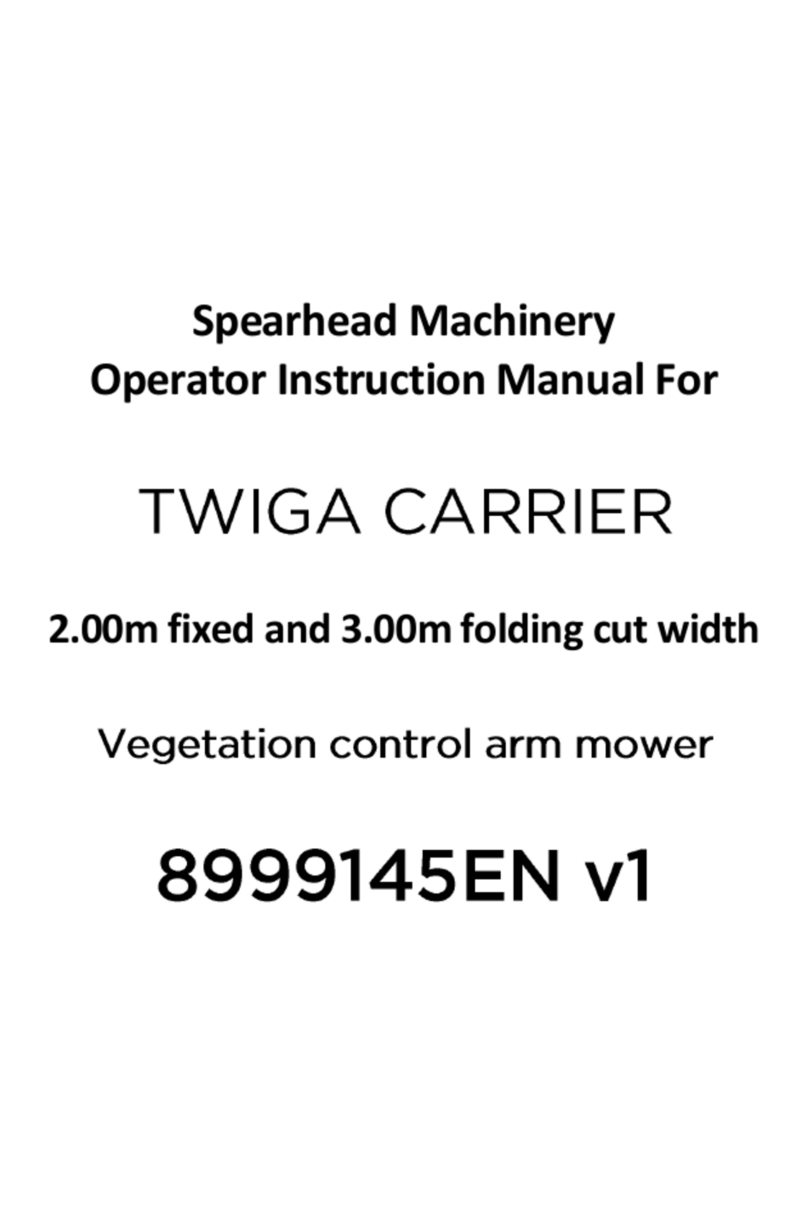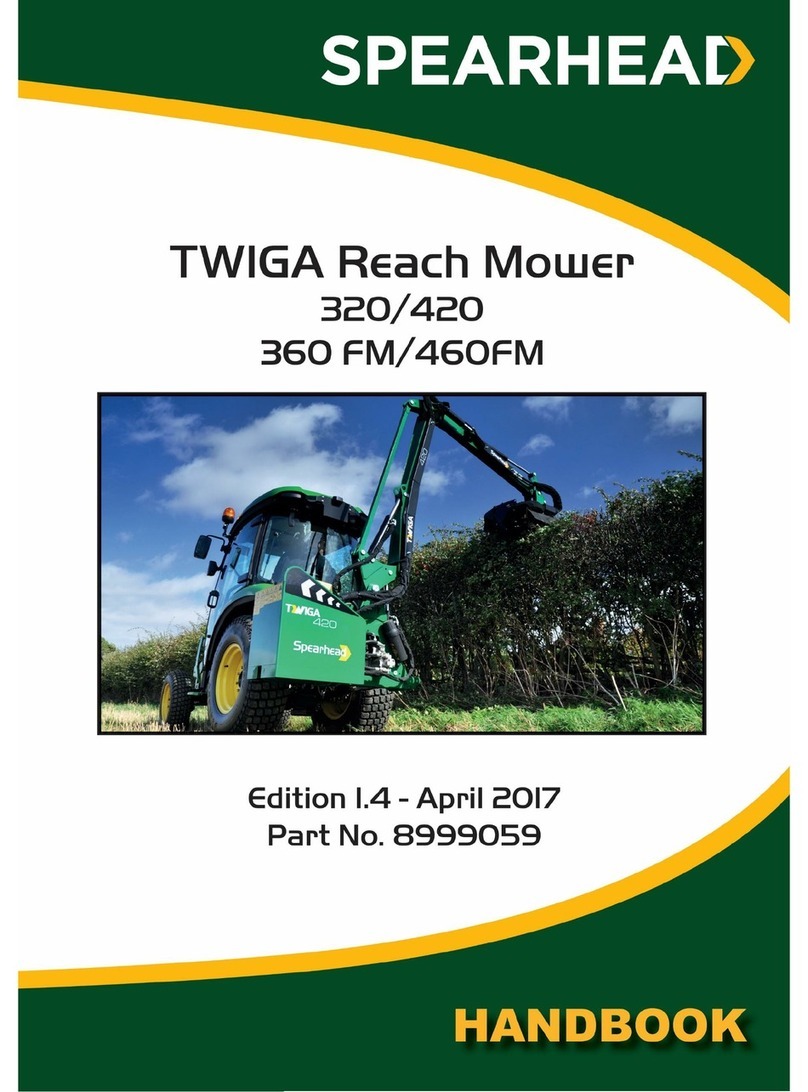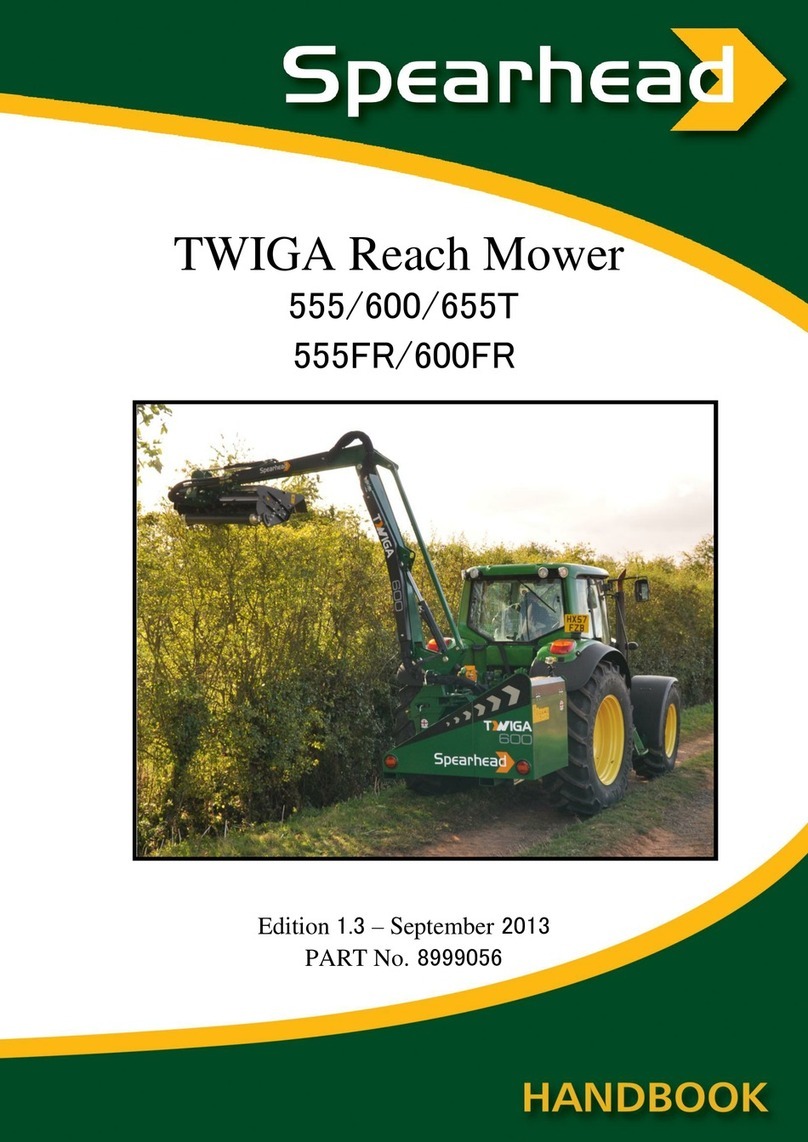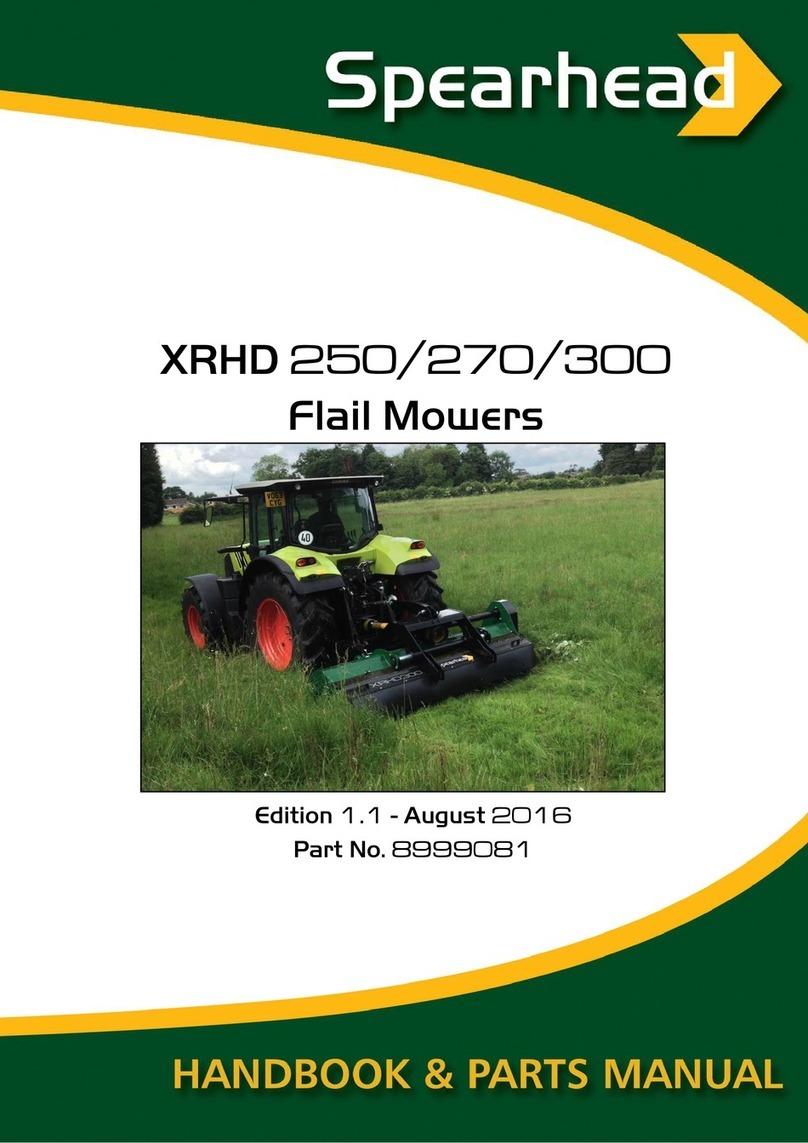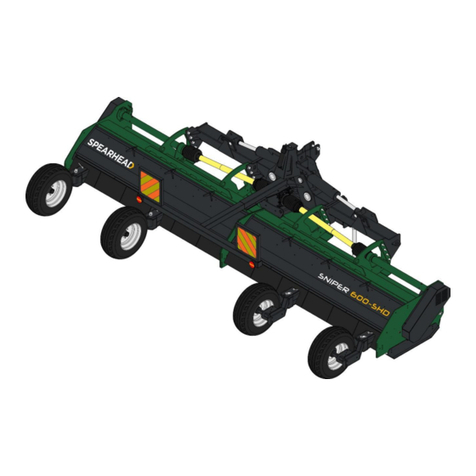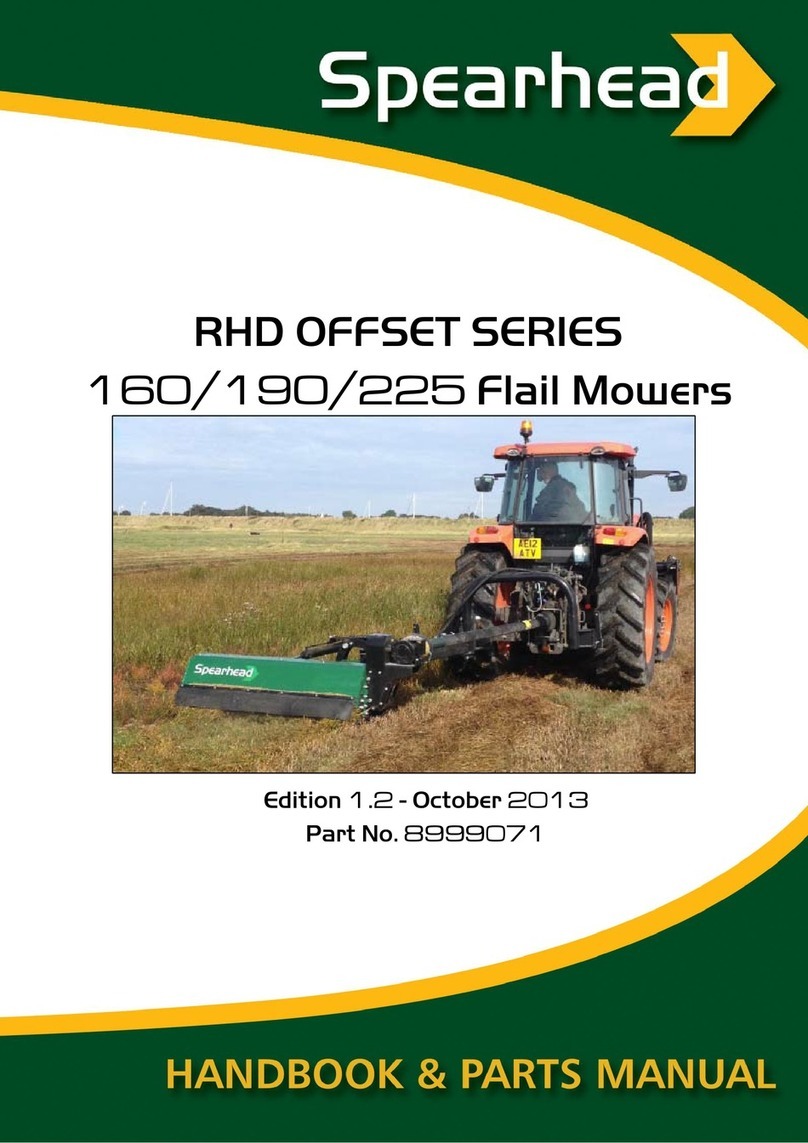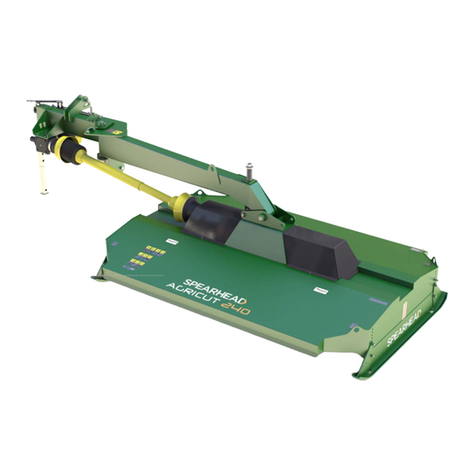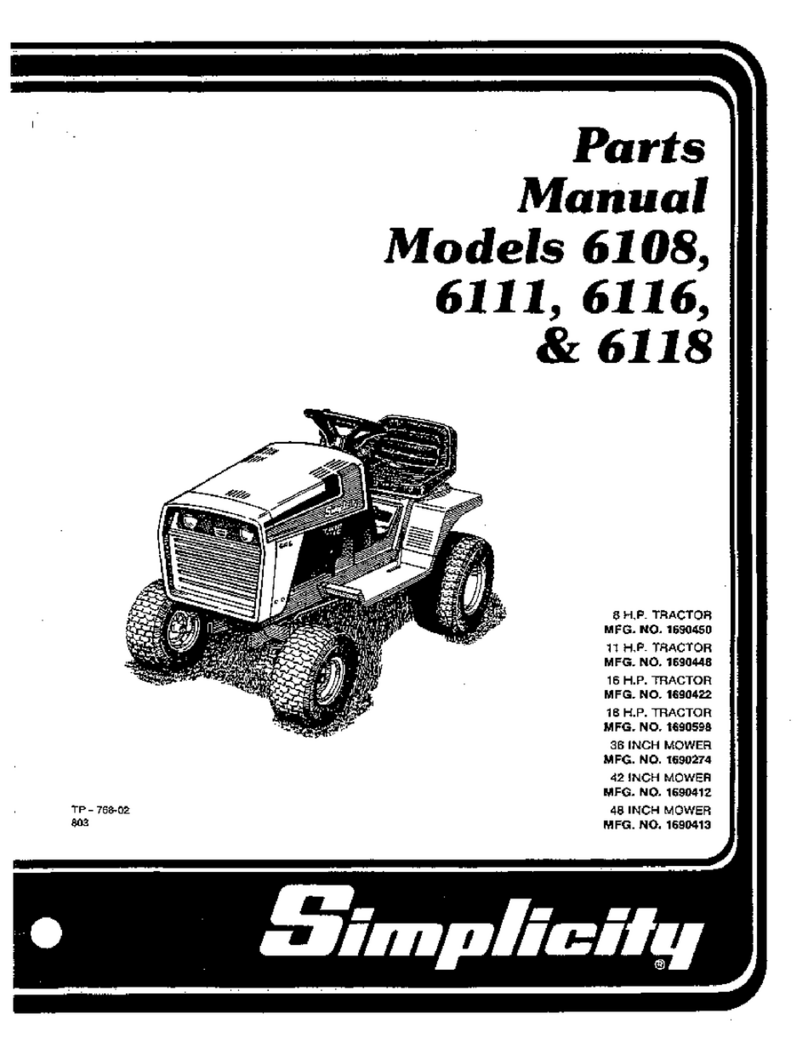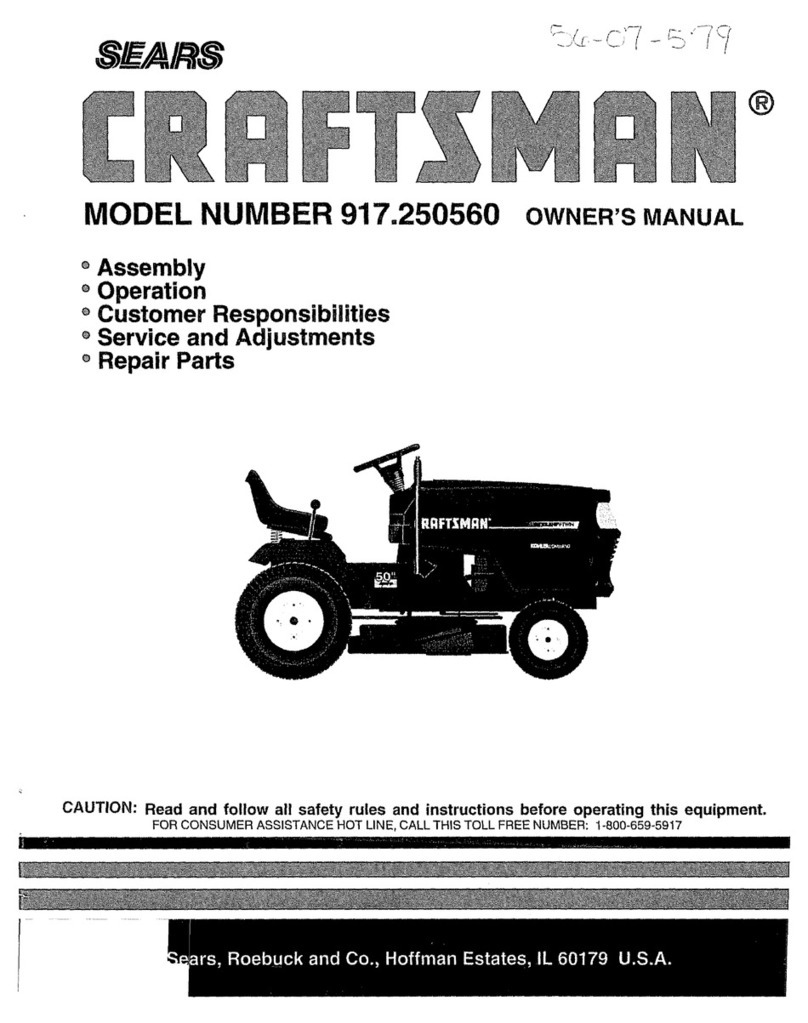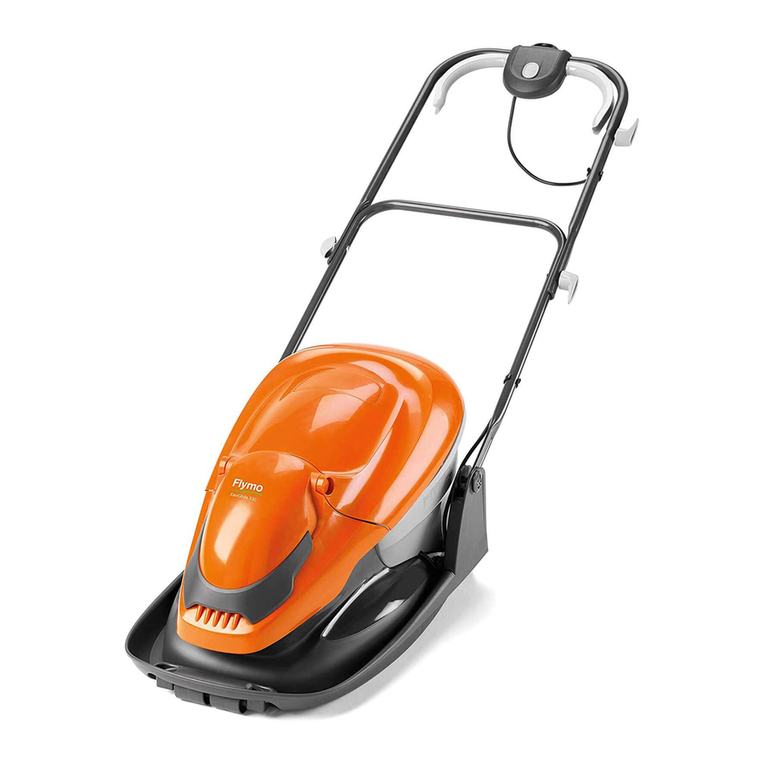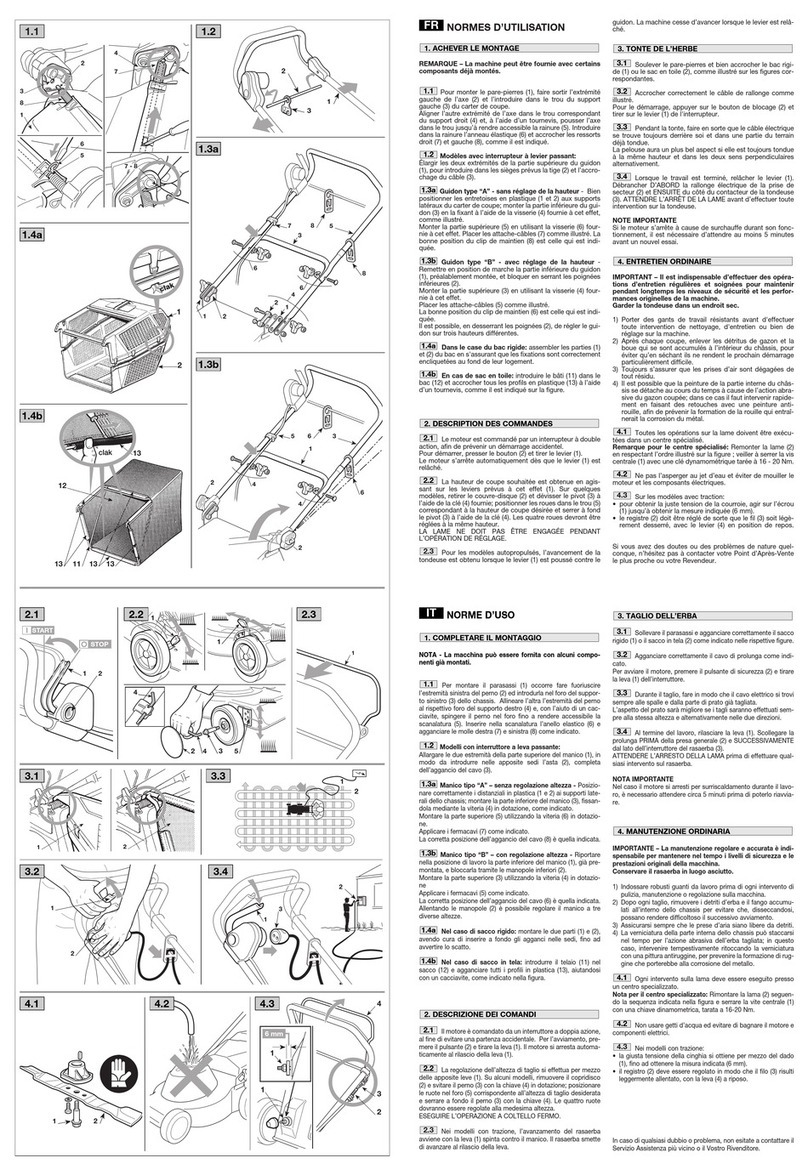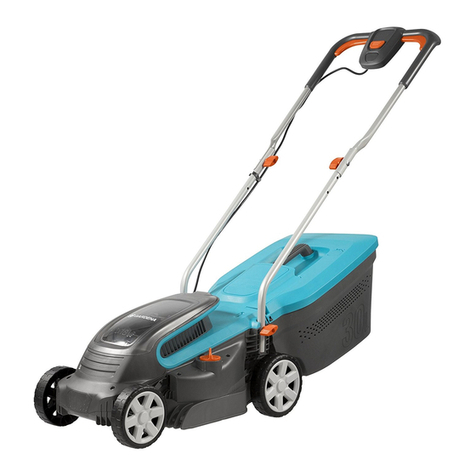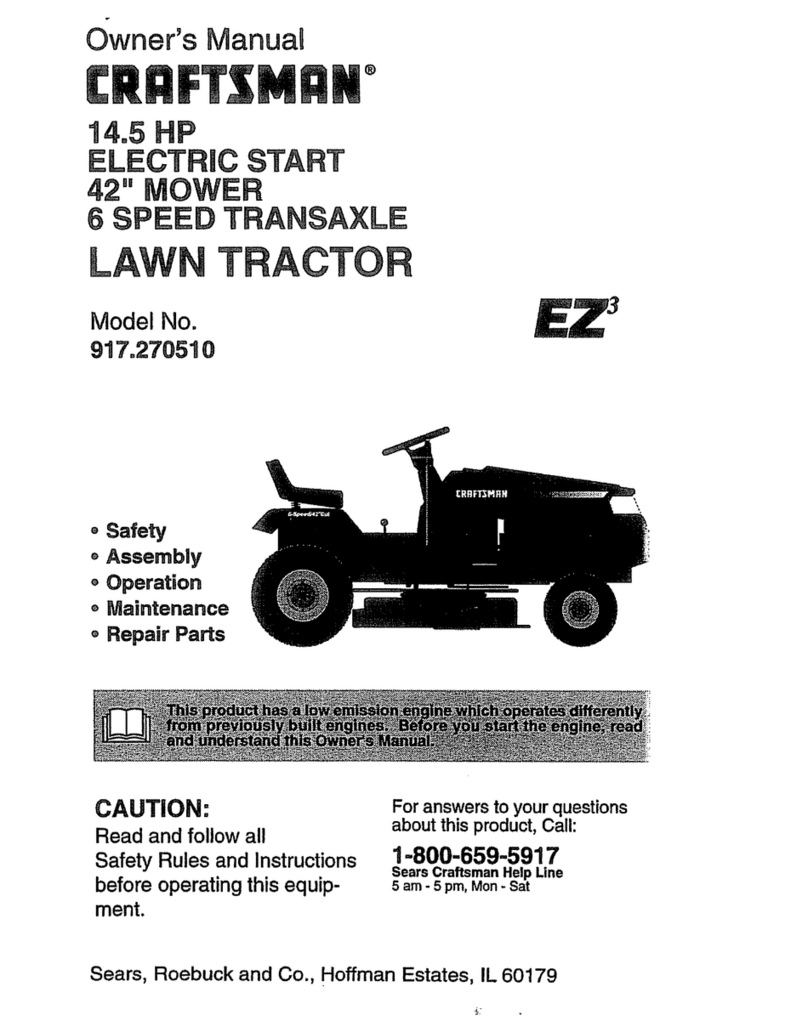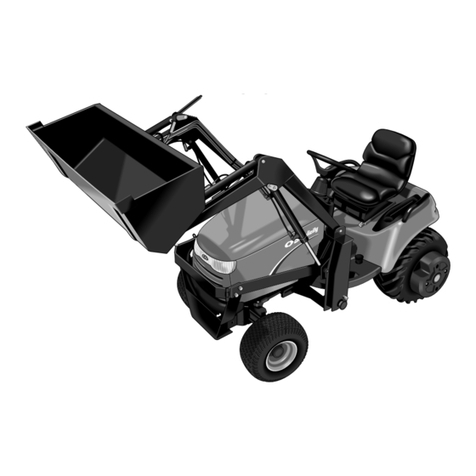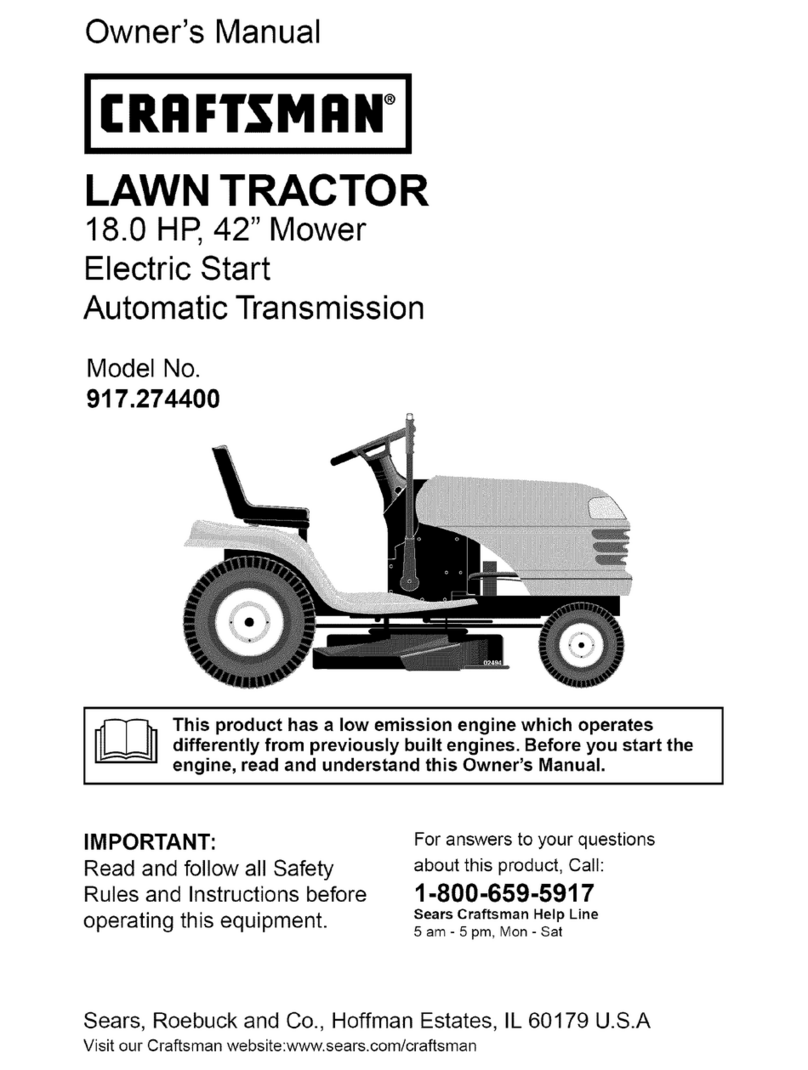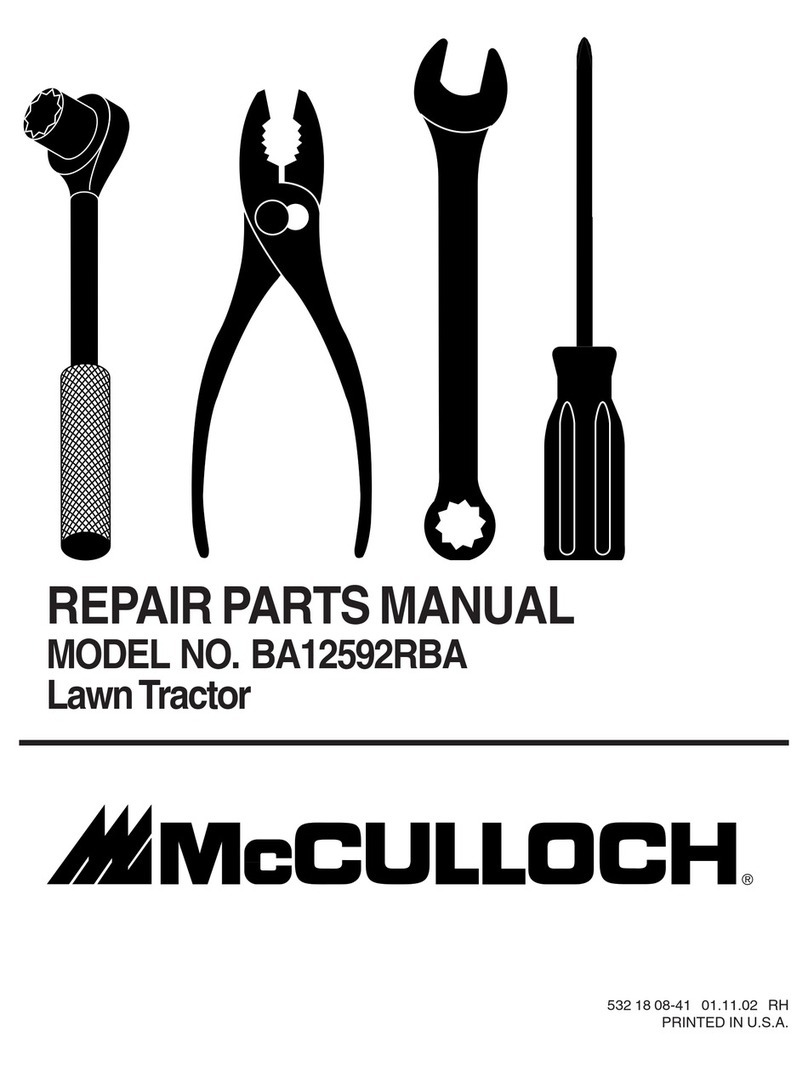R Series R190/R225/R245/R270
11
Vehicle/Tractor Preparation
We recommend vehicles are fitted with cabs
using ‘safety glass’ windows and protective
guarding when used with our machines.
Fit Operator Guard (part no. 73 13 324) using
the hooks provided. Shape the mesh to cover
all vulnerable areas.
Remember the driver must be looking through
mesh and/or polycarbonate glazing when
viewing the machine in all positions - unless
the vehicle/ cab manufacturer can demonstrate
that the penetration resistance is equivalent to, or higher than, that provided by
mesh/polycarbonate glazing. If the tractor has a roll bar only, a frame must be made to
carry both mesh and polycarbonate glazing. The operator should also use personal
protective equipment to reduce the risk of serious injury such as; eye protection (mesh
visor to EN1731 or safety glasses to EN166), hearing protection to EN352, safety
helmet to EN297, gloves, filter mask and high visibility clothing.
Vehicle Ballast
It is imperative when attaching ‘third-party’ equipment to a vehicle that the maximum possible
stability of the machine and vehicle combination is achieved –this can be accomplished by the
utilisation of ‘ballast’ in order to counter-balance the additional equipment added.
Front weights may be required for rear mounted machines to place 15% of total outfit weight on
the front axle for stable transport on the road and to reduce ‘crabbing’ due to the drag of the
cutting unit when working on the ground.
Where a machine works to the side of the tractor rear weights may be required to maintain a
reasonable amount of rear axle load on the opposing wheel.
All factors must be addressed in order to match the type and nature of the equipment added to
the circumstances under which it will be used - factors that effect stability are:
•Centre of gravity of the tractor/machine combination.
•Geometric conditions, e.g. position of the cutting head and ballast.
•Weight, track width and wheelbase of the tractor.
•Acceleration, braking, turning and the relative position of the cutting unit during these
operations.
•Ground conditions, e.g. slope, grip, load capability of the soil/surface.
•Rigidity of implement mounting.
Suggestions to increase stability:
•Increasing rear wheel track - a vehicle with a wider wheel track is more stable.
•Ballasting the wheel; it is preferable to use external weights but liquid can be added to around
75% of the tyre volume –water with anti-freeze or the heavier Calcium Chloride alternative
can be used.
•Addition of weights –care should be taken in selecting the location of the weights to ensure
they are added to a position that offers the greatest advantage.
•Front axle locking, check with tractor manufacturer.
The advice above is offered as a guide for stability only and is not a guide to vehicle
strength. It is therefore recommended that you consult your vehicle manufacturer or
local dealer to obtain specific advice on this subject, additionally advice should be
sought from a tyre specialist with regard to tyre pressures and ratings suitable for the
type and nature of the machine you intend to fit.




















